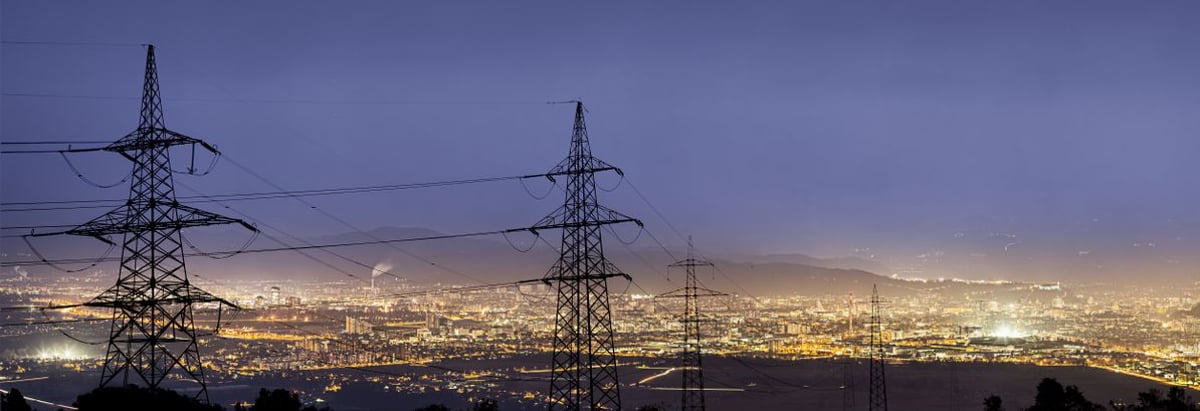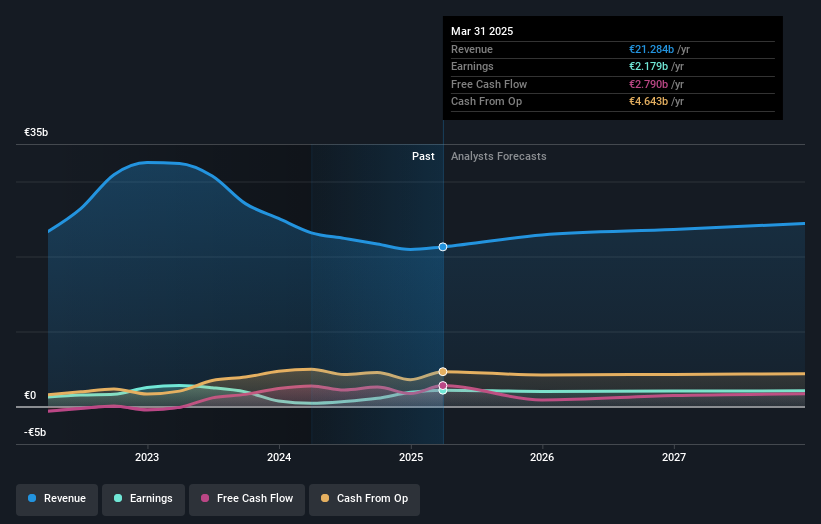- Spain
- /
- Electric Utilities
- /
- BME:ELE
Public companies account for 70% of Endesa, S.A.'s (BME:ELE) ownership, while individual investors account for 21%

Key Insights
- Endesa's significant public companies ownership suggests that the key decisions are influenced by shareholders from the larger public
- 70% of the company is held by a single shareholder (Enel SpA)
- Using data from analyst forecasts alongside ownership research, one can better assess the future performance of a company
If you want to know who really controls Endesa, S.A. (BME:ELE), then you'll have to look at the makeup of its share registry. We can see that public companies own the lion's share in the company with 70% ownership. Put another way, the group faces the maximum upside potential (or downside risk).
Meanwhile, individual investors make up 21% of the company’s shareholders.
Let's take a closer look to see what the different types of shareholders can tell us about Endesa.
View our latest analysis for Endesa

What Does The Institutional Ownership Tell Us About Endesa?
Many institutions measure their performance against an index that approximates the local market. So they usually pay more attention to companies that are included in major indices.
We can see that Endesa does have institutional investors; and they hold a good portion of the company's stock. This suggests some credibility amongst professional investors. But we can't rely on that fact alone since institutions make bad investments sometimes, just like everyone does. If multiple institutions change their view on a stock at the same time, you could see the share price drop fast. It's therefore worth looking at Endesa's earnings history below. Of course, the future is what really matters.

Hedge funds don't have many shares in Endesa. Enel SpA is currently the company's largest shareholder with 70% of shares outstanding. This essentially means that they have extensive influence, if not outright control, over the future of the corporation. With 1.6% and 1.3% of the shares outstanding respectively, BlackRock, Inc. and Thornburg Investment Management, Inc. are the second and third largest shareholders.
While studying institutional ownership for a company can add value to your research, it is also a good practice to research analyst recommendations to get a deeper understand of a stock's expected performance. There are plenty of analysts covering the stock, so it might be worth seeing what they are forecasting, too.
Insider Ownership Of Endesa
The definition of company insiders can be subjective and does vary between jurisdictions. Our data reflects individual insiders, capturing board members at the very least. The company management answer to the board and the latter should represent the interests of shareholders. Notably, sometimes top-level managers are on the board themselves.
Most consider insider ownership a positive because it can indicate the board is well aligned with other shareholders. However, on some occasions too much power is concentrated within this group.
We note our data does not show any board members holding shares, personally. It is unusual not to have at least some personal holdings by board members, so our data might be flawed. A good next step would be to check how much the CEO is paid.
General Public Ownership
With a 21% ownership, the general public, mostly comprising of individual investors, have some degree of sway over Endesa. This size of ownership, while considerable, may not be enough to change company policy if the decision is not in sync with other large shareholders.
Public Company Ownership
We can see that public companies hold 70% of the Endesa shares on issue. We can't be certain but it is quite possible this is a strategic stake. The businesses may be similar, or work together.
Next Steps:
It's always worth thinking about the different groups who own shares in a company. But to understand Endesa better, we need to consider many other factors. For instance, we've identified 3 warning signs for Endesa (1 is significant) that you should be aware of.
If you would prefer discover what analysts are predicting in terms of future growth, do not miss this free report on analyst forecasts.
NB: Figures in this article are calculated using data from the last twelve months, which refer to the 12-month period ending on the last date of the month the financial statement is dated. This may not be consistent with full year annual report figures.
Valuation is complex, but we're here to simplify it.
Discover if Endesa might be undervalued or overvalued with our detailed analysis, featuring fair value estimates, potential risks, dividends, insider trades, and its financial condition.
Access Free AnalysisHave feedback on this article? Concerned about the content? Get in touch with us directly. Alternatively, email editorial-team (at) simplywallst.com.
This article by Simply Wall St is general in nature. We provide commentary based on historical data and analyst forecasts only using an unbiased methodology and our articles are not intended to be financial advice. It does not constitute a recommendation to buy or sell any stock, and does not take account of your objectives, or your financial situation. We aim to bring you long-term focused analysis driven by fundamental data. Note that our analysis may not factor in the latest price-sensitive company announcements or qualitative material. Simply Wall St has no position in any stocks mentioned.
About BME:ELE
Endesa
Engages in the generation, distribution, and sale of electricity in Spain, Portugal, France, Germany, the United Kingdom, Switzerland, Luxembourg, the Netherlands, Singapore, Italy, Morocco, and internationally.
Outstanding track record established dividend payer.
Similar Companies
Market Insights
Community Narratives



